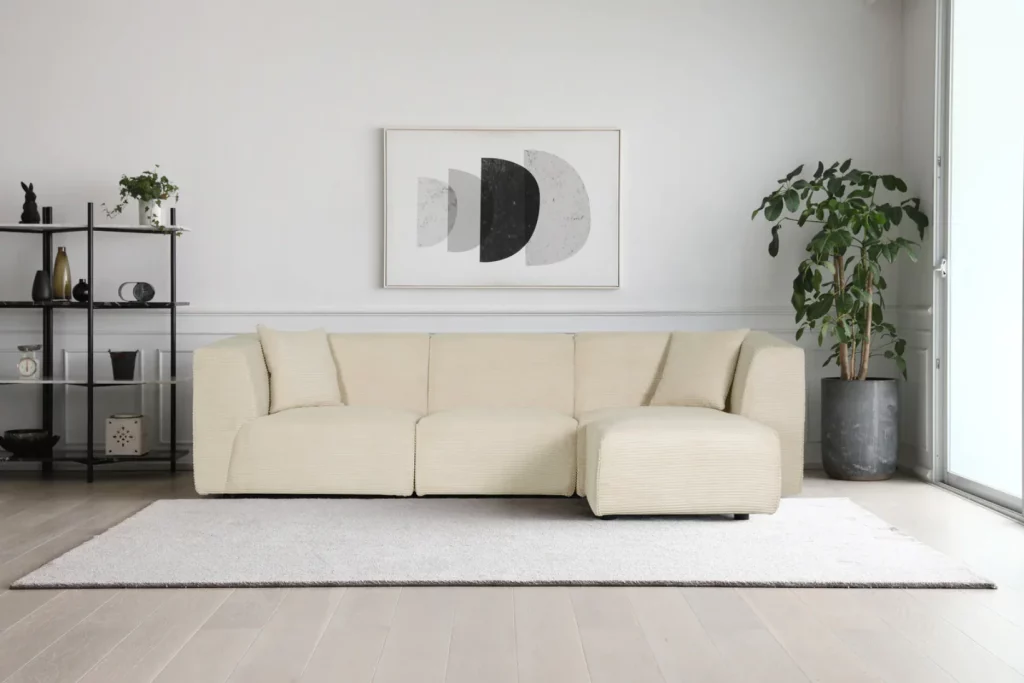The Rise of Modular Sofas: Exploring the Socioeconomic Factors

In recent years, modular sofas have experienced a significant surge in popularity. This phenomenon can be attributed to several key factors, each rooted in socioeconomic dynamics. Let’s delve into the reasons behind the growing success of modular sofas and how they reflect broader societal trends.
1. Usability in Evolving Spaces
The first factor contributing to the rising popularity of modular sofas is their enhanced usability, particularly in living spaces. With the evolving dynamics of modern households, especially in the wake of the COVID-19 pandemic, people are spending more time at home and reevaluating the functionality of their living areas. Social media platforms like Instagram, TikTok, and Pinterest have played a role in fueling this interest by showcasing innovative design ideas and inspiring users to reimagine their home environments.
2. Aesthetic Appeal and the Influence of 1970s Trends
The aesthetic appeal of modular sofas is another significant driver of their success. There has been a resurgence of design trends from the 1970s, with a focus on warm, inviting interiors. This nostalgic aesthetic, characterized by elements such as wood finishes, indoor plants, and muted color palettes, has contributed to the popularity of modular sofas, which blend functionality with stylish design.
3. Housing Insecurity and the Need for Versatile Furniture
However, underlying the optimism surrounding modular sofas is the sobering reality of housing insecurity faced by a significant portion of the population. In an era where owning a stable living space is increasingly challenging, modular furniture offers a practical solution. As more people, not just younger generations, struggle to find affordable and permanent housing, modular sofas provide flexibility and adaptability to changing living situations.
The Impact of Remote Work on Home Design
The shift to remote work has reshaped how people use their homes, leading to a greater emphasis on creating multifunctional living spaces. With remote work becoming a permanent fixture for many, there is a growing need to transform areas within the home into functional workspaces. Modular sofas offer a versatile solution, allowing homeowners to seamlessly transition between work and leisure activities within the same space.
According to Manuel Delgado, strategic interior design manager at Ikea Spain, “The living room is one of the most versatile spaces in the home, accommodating various activities throughout the day. From remote work in the morning to family time in the evening, the living room serves as a hub for different functions.” Ikea’s Jättebo sofa series exemplifies this versatility, with its modular design allowing for customizable configurations to suit different activities and spatial constraints.
Embracing 1970s-Inspired Design
The resurgence of 1970s-inspired design trends has influenced the popularity of modular sofas, as consumers seek furniture that combines functionality with retro charm. Designs reminiscent of the 1970s era, characterized by bold geometric shapes and plush upholstery, evoke a sense of nostalgia and comfort. Spanish furniture brand Really Nice Things offers modular sofa models like Lea and Harper, which draw inspiration from the eclectic style of the 1970s while incorporating modern elements for a contemporary look.
According to Andrés Gramage, founder of Really Nice Things, “We love the 1970s for its playful, colorful, and eclectic style. It was a transformative decade, marked by cultural shifts.” The Harper sofa reflects this aesthetic with its geometric lines and plush velvet upholstery, providing a cozy yet stylish seating option for modern homes.
Addressing Contemporary Housing Challenges
The growing prevalence of housing insecurity has fueled the demand for flexible and adaptable furniture solutions. As more people face frequent relocations and limited living space, modular sofas offer a practical and space-saving solution. Their modular design allows for easy assembly, disassembly, and customization, making them ideal for transient living situations.
Manuel Delgado emphasizes the importance of adaptability in furniture design, particularly for compact living spaces. “Modularity and multifunctionality are key considerations for small homes,” he explains. Ikea’s Jättebo sofa series is designed to meet these needs, offering modular components that can be configured to fit different room layouts and usage scenarios.
Conclusion: Modular Sofas as a Reflection of Societal Trends
In conclusion, the growing popularity of modular sofas reflects broader socioeconomic trends, including changes in housing dynamics and lifestyle preferences. As remote work becomes more prevalent and housing affordability remains a challenge, consumers are seeking furniture that offers versatility, comfort, and style.
The resurgence of 1970s-inspired design further underscores the timeless appeal of modular sofas, which combine retro aesthetics with modern functionality. Brands like Ikea and Really Nice Things are catering to these evolving consumer preferences by offering modular sofa designs that prioritize adaptability and style.
As society continues to grapple with housing insecurity and the evolving dynamics of remote work, modular furniture solutions are likely to remain in high demand. By addressing these contemporary challenges while embracing timeless design aesthetics, modular sofas have solidified their place as versatile and indispensable pieces of furniture in modern homes.


